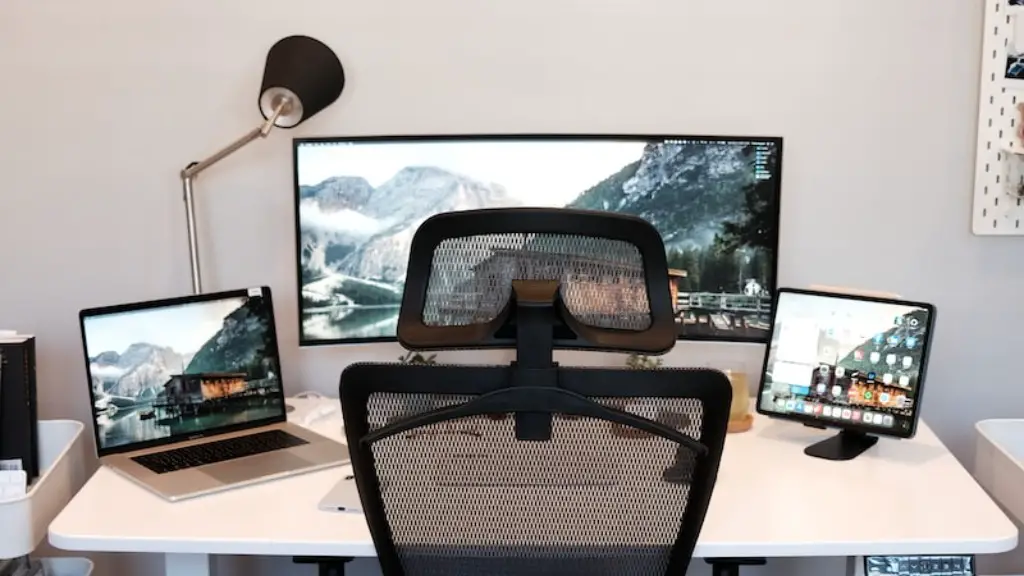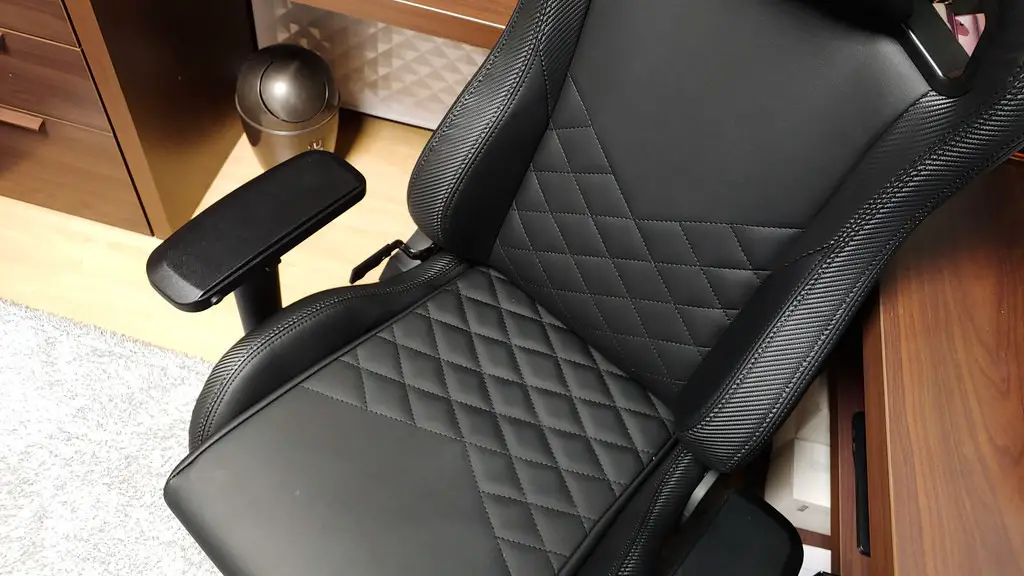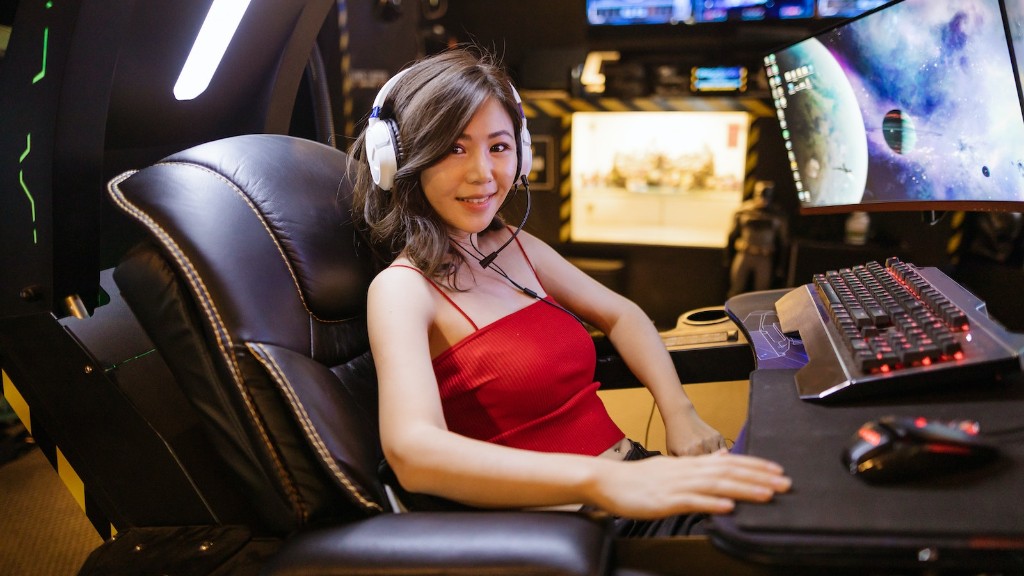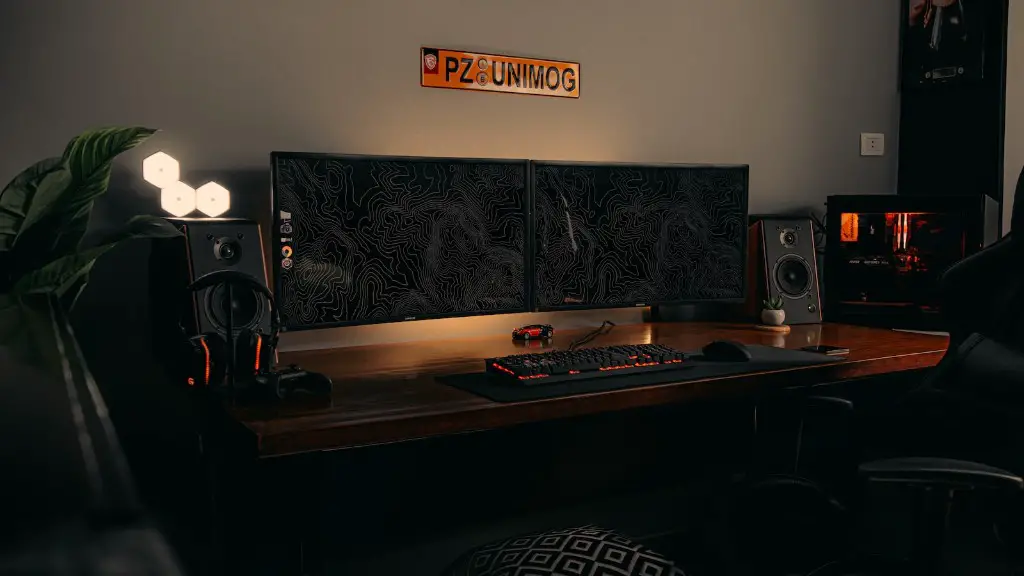Creating an ideal setup for gaming on a PC is essential for a great gaming experience. One of the first things to consider is where to put your gaming PC. There are several things that should be taken into consideration when deciding where to put your PC, such as the distance from your monitor, accessibility, ventilation, and cable management.
Keeping the PC close to your monitor is important if you want to reduce lag and get the most out of your gaming performance. All cables between the PC and monitor should be wired and preferably hidden away. You can use zip ties to organize the cables together, so they’re not all tangled up.
Making sure the PC gets enough air circulation and cooling is important, as your gaming performance can suffer if the internal components get too hot. The ideal location for the PC is an open space that allows plenty of room for air to circulate around it.
To protect against dust and dirt getting into the PC’s components, putting it in an enclosed space is a good idea. If you have the means, you can even invest in PGF – Personal Gaming Furniture that is specially designed for keeping consoles free of dust, dirt, and other contaminants that may damage the parts.
Finally, you should make sure any peripherals, such as keyboards and mice, are also conveniently located within easy reach. You can use mouse bungees to keep the cables tidy and neat.
Storage Options For Your PC
When deciding where to put your PC, the amount of space available should also be taken into account. If you’re short on space, you could opt for a desktop-style case or a mid-tower case, which offer plenty of room while taking up less space than a full tower case.
You can also use external storage solutions such as hard drives, solid-state drives (SSDs), and cloud storage. Hard drives provide more capacity for storing games and other media, while SSDs offer faster loading times for games. Cloud storage solutions provide the flexibility to move data around, so you can take your gaming library with you wherever you go.
You should also make sure there’s plenty of space for storing games and other media, such as external hard drives, USB sticks, discs, etc. If you’re planning on overclocking your PC, you’ll need a dedicated cooling system and a good quality power supply in order to protect your components from burning out.
Finally, if you have a laptop, make sure it’s placed on a flat, comfortable surface, as this will make it easier to type or use the mouse. You should also make sure the laptop is connected to a surge protector and the battery is charged.
Managing The Cables
Cable management is an important part of any gaming setup and can be very time consuming if not done properly. You should spend some time laying out the cables in your setup, so you can make sure they’re organized and out of the way.
Using zip ties and cable channels is a great way to keep the cables organized and tucked away. Hook and loop fasteners, such as Velcro and double-sided tape, can also be used to secure cables and keep them in place.
If you’re going for a more professional look, you can invest in custom cable sleeves and lacing. These products can help you reduce cable clutter and make your setup look more professional.
It’s also a good idea to invest in a surge protector and an Uninterrupted Power Supply (UPS) in case of a power failure. This is especially important if you plan on overclocking your system, as higher voltage can damage your components.
Having too many external peripherals, such as gaming controllers and keyboards, can also increase the amount of clutter in your setup. Investing in a wireless headset and controllers can reduce the number of cables that need to be managed and will create a cleaner and more organized setup.
Ventilating Your Gaming PC
Ventilation is critical for gaming PCs, as the internal components get very hot. Invest in a good quality cooling system, such as liquid cooling or a high-end fan, to ensure the internal components stay at the optimal temperature.
You should also make sure that the PC is in an open space, where air can circulate. If you opt for a desktop-style or mid-tower PC case, you can place it on the floor or on a desk. A full tower case requires more space, so it may need to be placed in a separate area.
You should also think about where to place the fans. For maximum cooling, the fans should be placed in the front to draw in cool air and push out hot air. Make sure to check the directions of the fan blades, as some fans can be reversed, and experiment to find the optimal fan placement.
If your gaming PC has multiple GPUs, you should make sure to spread them out and add additional cooling. This will help reduce the strain on the system and keep temperatures in check. You can also use thermal paste to better disperse heat and improve cooling performance.
Finally, if you’re still having issues with overheating, you might want to invest in a cooling mat, which can be placed under the PC to help disperse the heat. These mats come in various sizes and materials, so you can find one that best fits your setup.
Monitor Placement and Connectivity
It’s important to make sure that your monitor is placed in the right position to reduce any lag and make the most out of your gaming performance. Placing the monitor directly in front of you and keeping the cables short will help reduce the amount of input lag.
You should also take into account the type of connection between your monitor and PC. If you’re using a HDMI or DVI cable, you’ll need to make sure it’s long enough for the connection. If you’re using a VGA cable, you should make sure the cables are securely in place, as any movement can cause damage to the cables and the connection.
You may also need to invest in additional monitors or TV screens if you want to keep track of multiple games or games requiring different perspectives. This can help make the gaming experience more immersive and enjoyable.
Finally, if you plan on playing games in virtual reality, you should double check the compatibility of your PC and headset and make sure the cables are easily accessible. You should also make sure the headset is properly calibrated and all settings are adjusted correctly.
Customize Your Gaming Setup
Personalizing a gaming setup is one of the best ways to make it unique, comfortable, and optimized for gaming. You can make tweaks and adjustments to millimeters for your comfort, such as the height of your monitor, the location of your keyboard and mouse, and the placement of your speakers.
Investing in accessories and tools that help keep everything organized and secure can also go a long way. Things like mouse bungees, cable ties, and lacing can help you achieve that clean, professional look.
You can also customize the look of your setup with LEDs and RGB lights. You can purchase RGB strips that can be attached to the PC case, monitor, or desk and then be synced together. This is a great way to add a personal touch to your setup and make it stand out.
You can also use custom skins and decals to make your setup more unique. You can purchase pre-made skins or decals, or print them out yourself. This is a great way to make your PC stand out and truly make it your own.
Finally, if you want to make your setup more comfortable, you can invest in a gaming chair that is ergonomically designed to reduce strain and improve posture. This will make long gaming sessions much more enjoyable and reduce fatigue.



